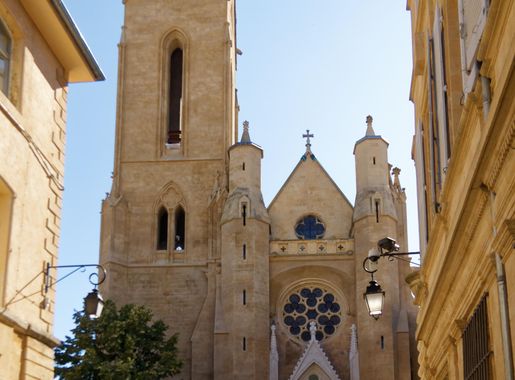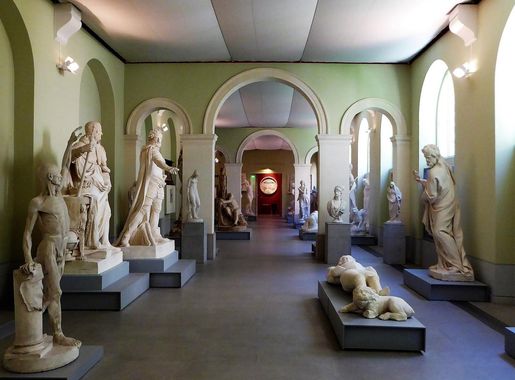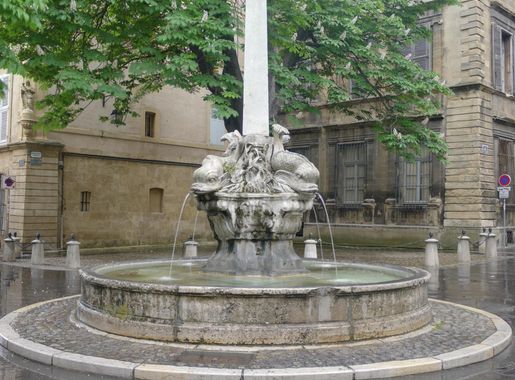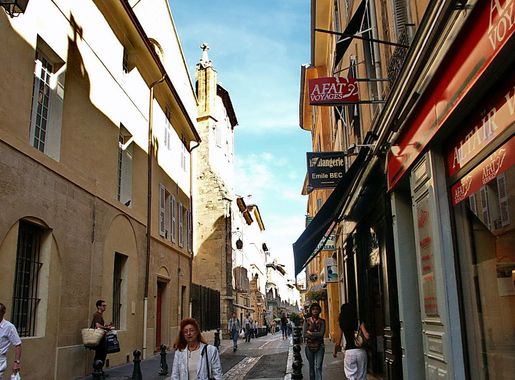
The Elegant Charm of Mazarin District
Discover the Mazarin District in Aix-en-Provence, where 17th-century elegance meets modern sophistication amidst tree-lined streets and historic landmarks.
Nestled in the heart of Aix-en-Provence, the Mazarin District stands as a testament to the city's rich architectural and cultural heritage. This elegant neighborhood, established in the 17th century, was designed by Archbishop Mazarin to house the city's nobility. As you stroll through its picturesque streets, you will be captivated by the classical beauty of its mansions, adorned with wrought-iron balconies and intricate stonework. The district's symmetrical layout and quiet, tree-lined avenues offer a serene escape from the bustling city center. A visit to the Mazarin District is incomplete without a stop at the Saint-Jean-de-Malte church, a striking Gothic structure that dominates the skyline. Nearby, the Granet Museum, housed in a former priory, showcases an impressive collection of fine art, including works by Cézanne, a native of Aix-en-Provence. The district is also home to the stunning Four Dolphins Fountain, an exquisite piece of 17th-century sculpture that serves as a focal point for the neighborhood. Beyond its architectural splendor, the Mazarin District is a hub of refined living. Elegant boutiques, quaint cafes, and gourmet restaurants line the streets, offering visitors a taste of the sophisticated Provençal lifestyle. Whether you're sipping coffee in a sun-dappled courtyard or exploring the hidden gardens behind grand façades, the Mazarin District invites you to experience the timeless charm of Aix-en-Provence.
Local tips in Mazarin District
- Visit early in the morning for a peaceful stroll and to capture the best photos without crowds.
- Wear comfortable shoes to navigate the cobblestone streets with ease.
- Don't miss the Granet Museum's collection of Cézanne's works to truly appreciate the local art heritage.
- Check out the local cafes for authentic Provençal pastries.
- Consider a guided tour to learn more about the history and hidden gems of the district.
The Elegant Charm of Mazarin District
Nestled in the heart of Aix-en-Provence, the Mazarin District stands as a testament to the city's rich architectural and cultural heritage. This elegant neighborhood, established in the 17th century, was designed by Archbishop Mazarin to house the city's nobility. As you stroll through its picturesque streets, you will be captivated by the classical beauty of its mansions, adorned with wrought-iron balconies and intricate stonework. The district's symmetrical layout and quiet, tree-lined avenues offer a serene escape from the bustling city center. A visit to the Mazarin District is incomplete without a stop at the Saint-Jean-de-Malte church, a striking Gothic structure that dominates the skyline. Nearby, the Granet Museum, housed in a former priory, showcases an impressive collection of fine art, including works by Cézanne, a native of Aix-en-Provence. The district is also home to the stunning Four Dolphins Fountain, an exquisite piece of 17th-century sculpture that serves as a focal point for the neighborhood. Beyond its architectural splendor, the Mazarin District is a hub of refined living. Elegant boutiques, quaint cafes, and gourmet restaurants line the streets, offering visitors a taste of the sophisticated Provençal lifestyle. Whether you're sipping coffee in a sun-dappled courtyard or exploring the hidden gardens behind grand façades, the Mazarin District invites you to experience the timeless charm of Aix-en-Provence.
Iconic landmarks you can’t miss
Fontaine de la Rotonde
Discover the beauty of Fontaine de la Rotonde, a stunning fountain in the heart of Aix-en-Provence, showcasing history, culture, and local charm.
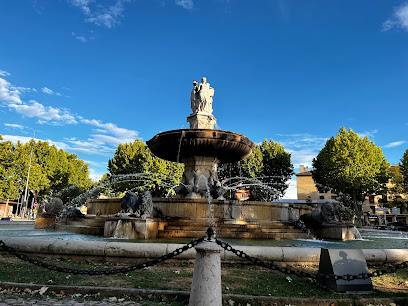
Hôtel de Caumont
Experience the allure of art and culture at Hôtel de Caumont, a premier destination for art lovers and tourists in Aix-en-Provence.
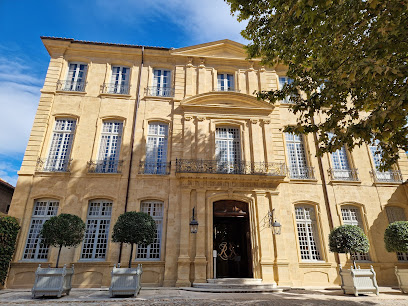
Musée Granet
Explore the rich collection of Musée Granet, where art from the Renaissance to modern times awaits in the picturesque Aix-en-Provence.
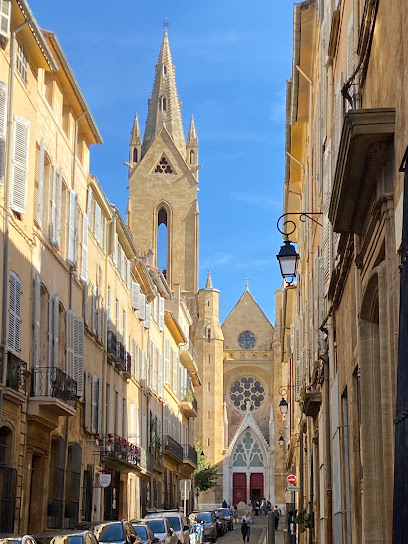
Place des Quatre-Dauphins
Discover the enchanting atmosphere of Place des Quatre-Dauphins, a historic square in Aix-en-Provence, featuring a stunning fountain and vibrant local life.
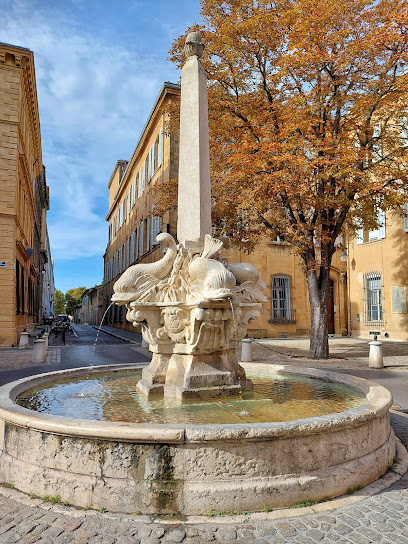
Field of the Painters
Explore the stunning landscapes of the Field of the Painters in Aix-en-Provence, a historical haven for art lovers and outdoor enthusiasts alike.
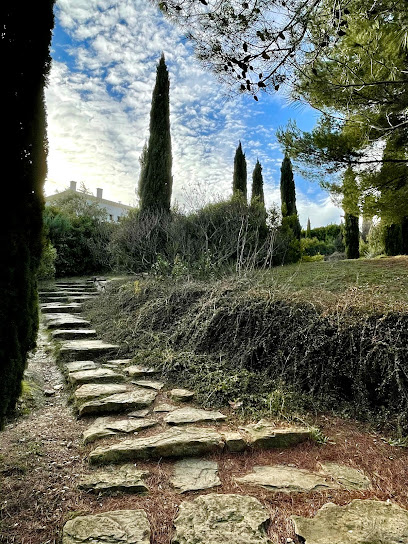
Fontaine Du Roi René
Discover the enchanting Fontaine du Roi René, a historical gem in Aix-en-Provence, surrounded by vibrant cafés and rich cultural heritage.
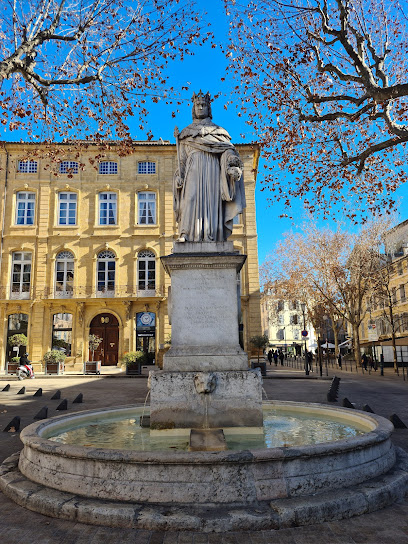
Saint Jean de Malte
Explore the serene beauty and rich history of Saint Jean de Malte, a stunning Catholic church and must-visit tourist attraction in Aix-en-Provence.
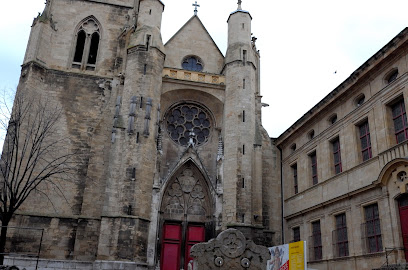
Fontaine Moussue
Discover the serene beauty of Fontaine Moussue, a historic fountain surrounded by lush greenery in the heart of Aix-en-Provence.
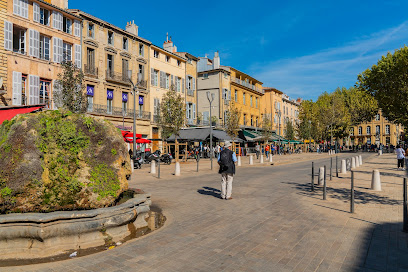
Fontaine des Neuf-Canons
Discover the timeless beauty of Fontaine des Neuf-Canons, a historic fountain in the heart of Aix-en-Provence, surrounded by culture and charm.
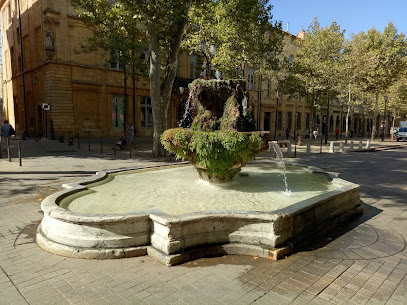
Tourreluque
Explore the historical charm of Tourreluque, a captivating landmark in Aix-en-Provence, where history and culture come alive.
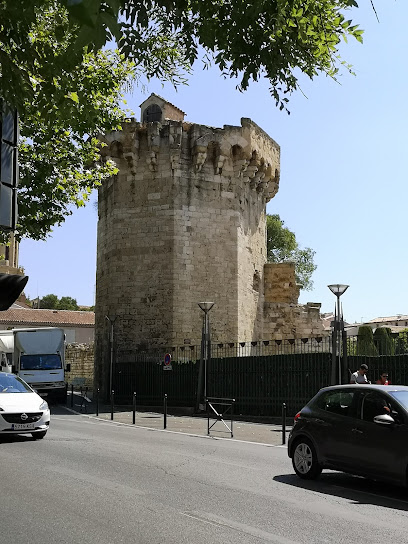
Unmissable attractions to see
Paroisse Cathédrale Saint Sauveur Aix-en-Provence
Discover the architectural beauty and rich history of Paroisse Cathédrale Saint Sauveur, a must-visit landmark in Aix-en-Provence, France.
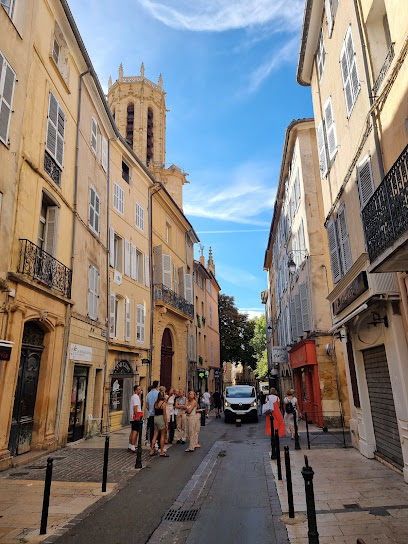
Promenade de la Torse
Explore the serene beauty of Promenade de la Torse, a tranquil park in Aix-en-Provence, perfect for relaxation and leisurely strolls amidst nature.
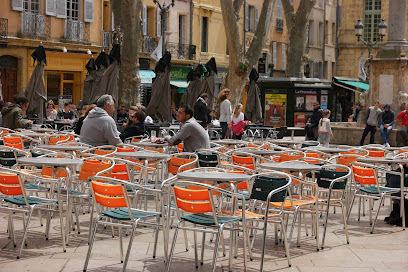
Parc Jourdan
Experience the serene beauty of Parc Jourdan, a tranquil park in Aix-en-Provence, perfect for relaxation and leisurely strolls amidst nature's splendor.
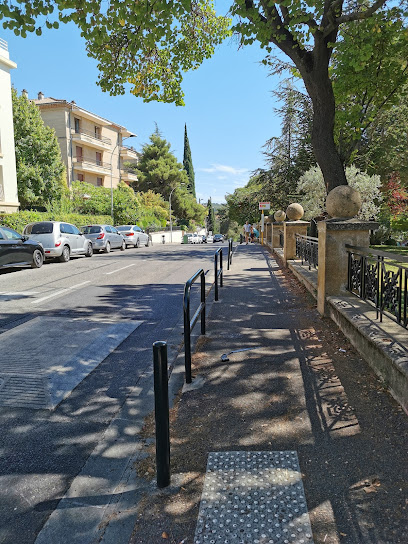
Parc Rambot
Experience the serene beauty of Parc Rambot, a tranquil park in Aix-en-Provence, perfect for relaxation and leisurely strolls amidst nature.
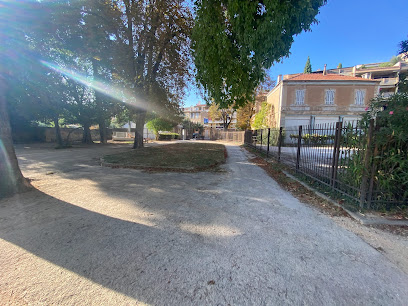
Saint Jean de Malte
Explore the architectural beauty and serene atmosphere of Saint Jean de Malte, a must-visit Catholic church in Aix-en-Provence, France.
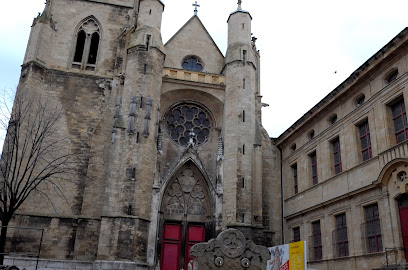
Musée du Vieil-Aix
Explore the rich history and cultural heritage of Aix-en-Provence at the charming Musée du Vieil-Aix, a hidden gem for history lovers.
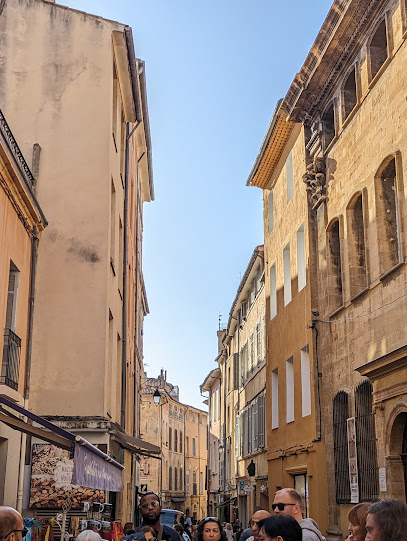
Essential places to dine
Les Fils à Maman Aix en Provence
Experience delightful French cuisine in Aix-en-Provence at Les Fils à Maman—where tradition meets eclectic flair.
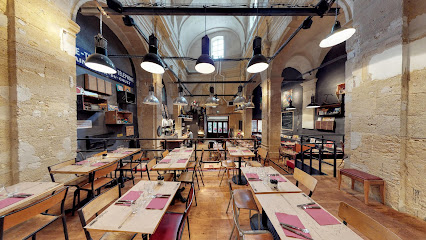
La Brocherie
Experience the essence of French cuisine at La Brocherie in Aix-en-Provence – where barbecue meets tradition.

Faubourg 46
Discover the culinary magic at Faubourg 46 in Aix-en-Provence – where exquisite flavors meet vibrant atmosphere.
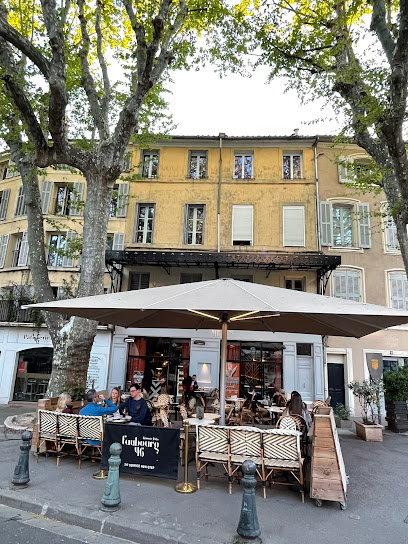
Licandro Le Bistro
Experience authentic French cuisine in the heart of Aix-en-Provence at Licandro Le Bistro - where every meal tells a story.
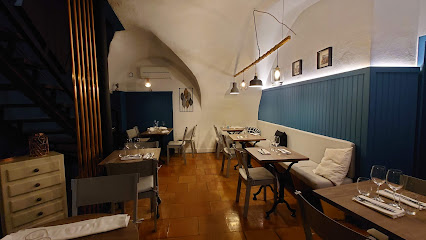
L'incontournable
Discover L'incontournable in Aix-en-Provence: where exquisite French and Mediterranean cuisine meets exceptional service in an enchanting setting.
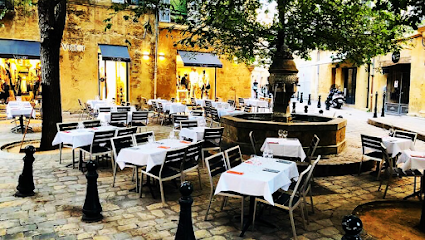
La Bouchée
Discover authentic Provençal cuisine at La Bouchée in Aix-en-Provence—where Mediterranean flavors meet French culinary tradition.
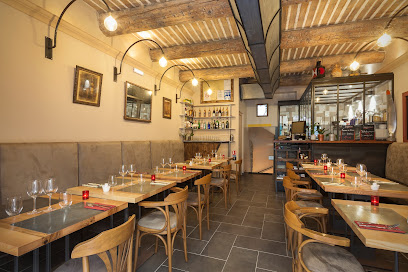
MITCH
Experience exquisite haute French and Mediterranean cuisine at MITCH, where culinary artistry meets elegance in Aix-en-Provence.
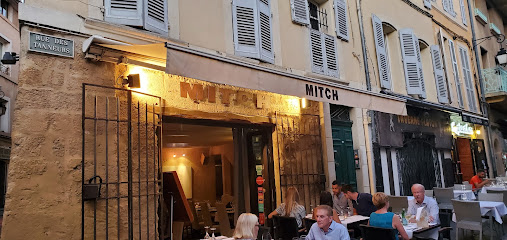
Jardin Mazarin
Discover exquisite French and Mediterranean cuisine at Jardin Mazarin, an elegant restaurant nestled in the heart of Aix-en-Provence.
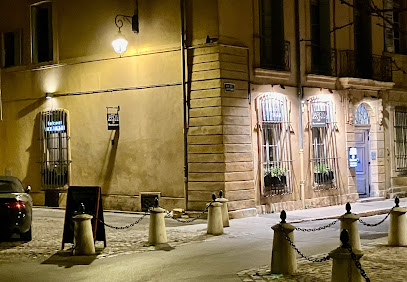
Le Jardin d'Amalula
Discover exquisite French cuisine at Le Jardin d'Amalula, where local flavors meet elegant dining in the heart of Aix-en-Provence.
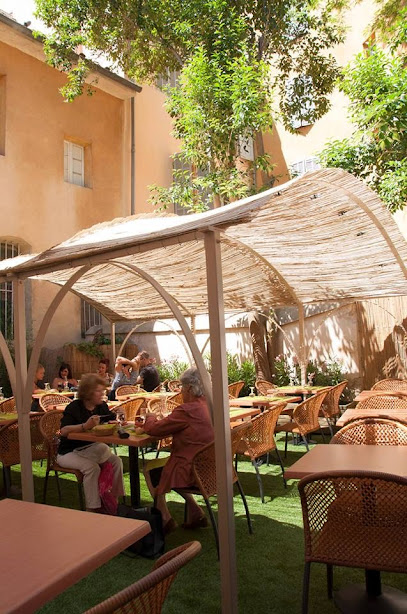
La Table Du Roi
Experience authentic Provencal flavors at La Table Du Roi in Aix-en-Provence's charming bistro setting.
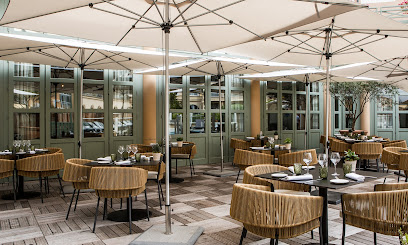
Markets, malls and hidden boutiques
Les Allées
Experience the best shopping and dining in Aix-en-Provence at Les Allées, where style meets local charm in a vibrant atmosphere.
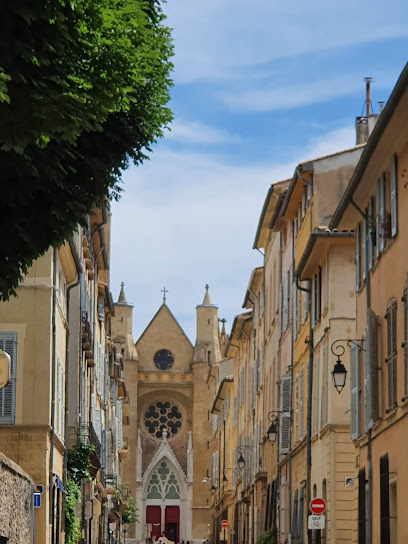
Blow Up
Explore a treasure trove of unique vintage clothing and accessories in the heart of Aix-en-Provence at Blow Up Vintage Clothing Store.
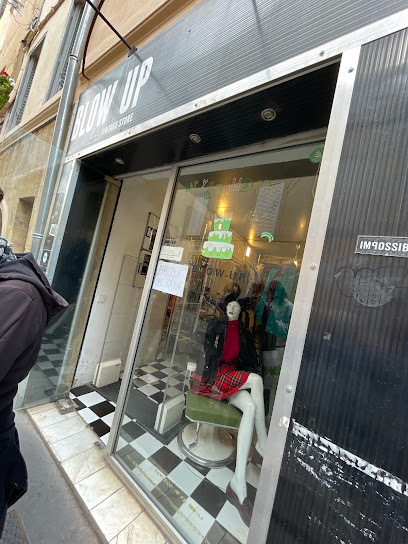
Promod
Discover the stylish collections at Promod, a chic clothing store in Aix-en-Provence, where fashion meets elegance in an unforgettable shopping experience.
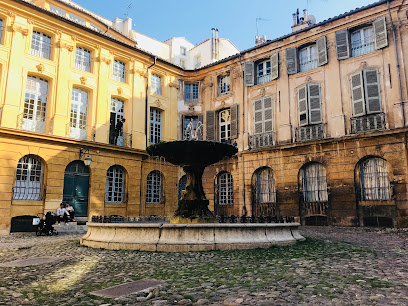
Boutique AMPM Aix en Provence
Discover exquisite furniture and stylish home goods at Boutique AMPM in Aix en Provence, where elegance meets comfort.
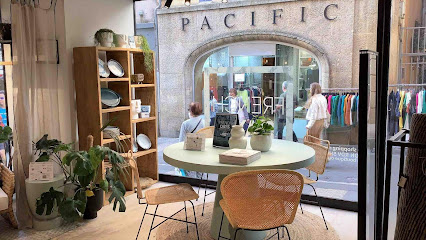
Novoid Plus
Discover contemporary men's fashion at Novoid Plus, your go-to clothing store in the heart of Aix-en-Provence, where style meets quality.
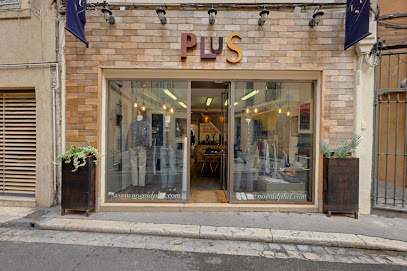
Mes Demoiselles | Magasin Aix-en-Provence
Experience the charm of Aix-en-Provence through the stylish offerings at Mes Demoiselles, where elegance meets French fashion.
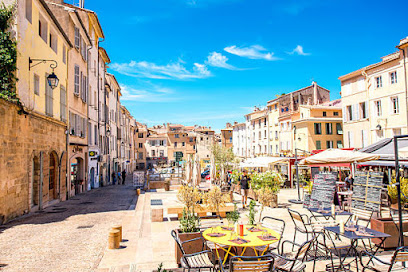
Le showroom...
Discover the ultimate destination for men’s fashion in Aix-en-Provence at Le Showroom, where style meets sophistication.
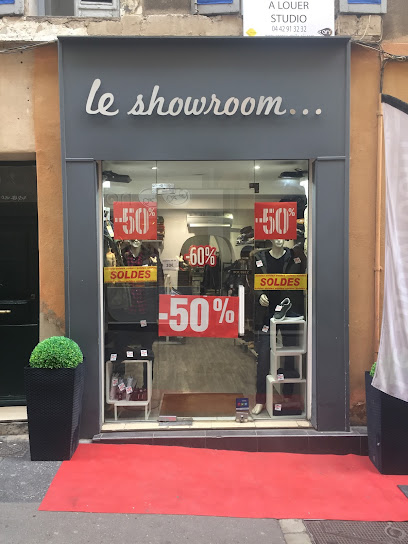
Mercury Bad Girls Club
Explore Mercury Bad Girls Club in Aix-en-Provence for an eclectic mix of trendy fashion that captures the essence of French style.
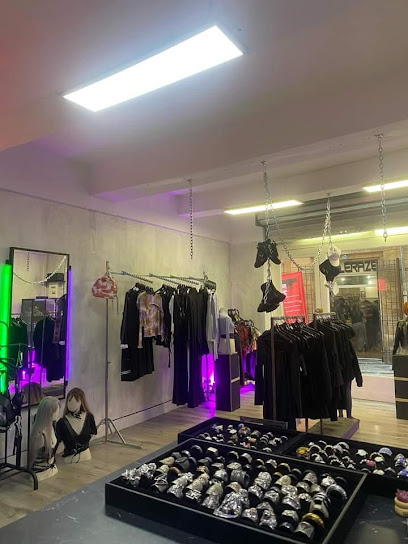
SOULEIADO
Discover the essence of Provencal fashion at SOULEIADO in Aix-en-Provence, where vibrant prints and quality craftsmanship await.
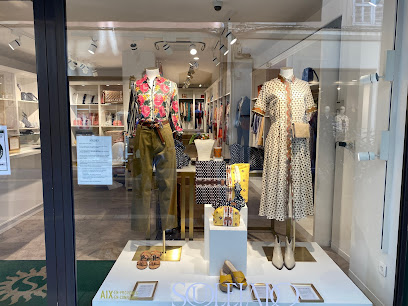
Insane Shop
Explore unique women's fashion and accessories at Insane Shop in Aix-en-Provence, where style meets local charm.
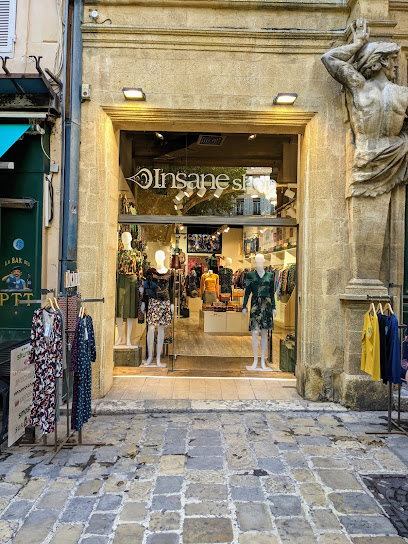
Essential bars & hidden hideouts
Bar Barracuda
Discover the vibrant nightlife at Bar Barracuda in Aix-en-Provence, where unique cocktails and a lively atmosphere await every visitor.
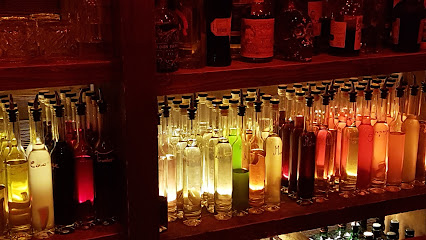
El Primo
Discover the vibrant flavors of Aix-en-Provence at El Primo, where exquisite wines and delicious tapas create an unforgettable culinary experience.

O'Shannon
Discover the vibrant atmosphere of O'Shannon, a beloved pub in Aix-en-Provence, where locals and tourists gather for great drinks and lively entertainment.
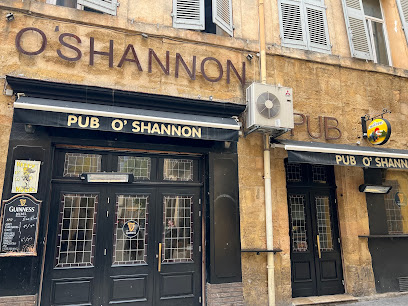
Le Brigand
Discover the cozy atmosphere and vibrant spirit of Le Brigand, a must-visit pub in the heart of Aix-en-Provence.
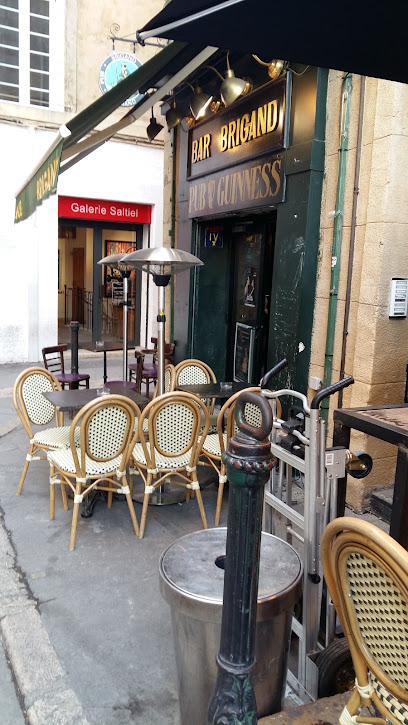
La Cocina Negra
Discover the vibrant nightlife of Aix-en-Provence at La Cocina Negra, where exquisite cocktails and a lively atmosphere await.
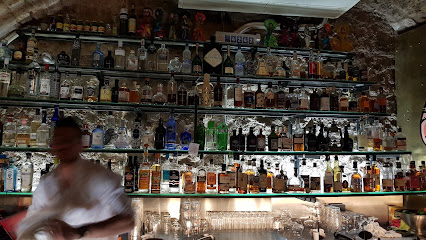
Le Vieux tonneau
Experience the finest wines and tantalizing tapas at Le Vieux Tonneau, a cozy bistro and wine bar in the heart of Aix-en-Provence.
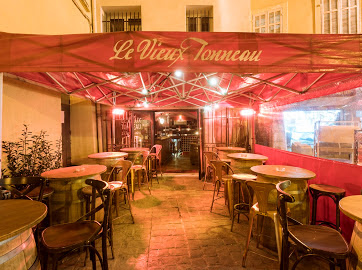
BACK to BAC - Aix-en-Provence
Discover the vibrant cocktail scene at BACK to BAC in Aix-en-Provence, where expertly crafted drinks and lively ambiance await.
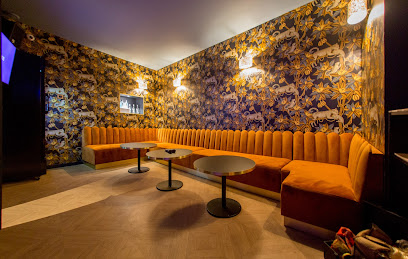
La méduse
Discover La Méduse, the ultimate wine bar in Aix-en-Provence, where exquisite local wines meet a cozy and inviting atmosphere.
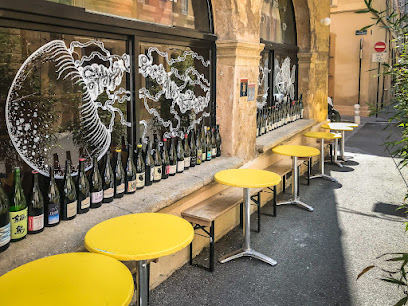
Bar des Oiseaux
Discover the charm of Aix-en-Provence at Bar des Oiseaux, a vibrant bar offering exquisite drinks and a cozy atmosphere.

Le Mazarin cocktail club
Experience the chic ambiance and exquisite cocktails at Le Mazarin Cocktail Club in Aix-en-Provence, the epitome of French nightlife.
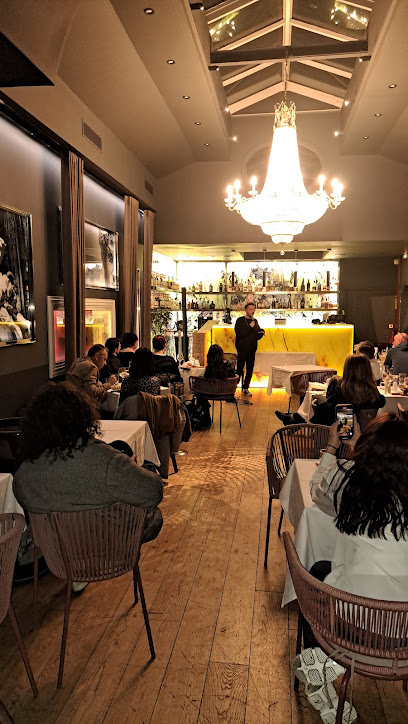
Local Phrases
-
- HelloBonjour
[bohn-zhoor] - GoodbyeAu revoir
[oh ruh-vwahr] - YesOui
[wee] - NoNon
[nohn] - Please/You're welcomeS'il vous plaît
[seel voo pleh] - Thank youMerci
[mehr-see] - Excuse me/SorryExcusez-moi/Désolé
[ehk-skew-zay mwah/deh-zoh-lay] - How are you?Comment ça va?
[koh-mohn sah vah] - Fine. And you?Bien. Et vous?
[byen. ay voo] - Do you speak English?Parlez-vous anglais?
[par-lay voo ahn-glay] - I don't understandJe ne comprends pas
[zhuh nuh kohm-prahnd pah]
- HelloBonjour
-
- I'd like to see the menu, pleaseJe voudrais voir le menu, s'il vous plaît
[zhuh voo-dray vwar luh muh-nyoo, seel voo pleh] - I don't eat meatJe ne mange pas de viande
[zhuh nuh mahnj pah duh vyand] - Cheers!Santé!
[sahn-tay] - I would like to pay, pleaseJe voudrais payer, s'il vous plaît
[zhuh voo-dray pay-ay, seel voo pleh]
- I'd like to see the menu, pleaseJe voudrais voir le menu, s'il vous plaît
-
- Help!Au secours!
[oh se-coor] - Go away!Allez-vous en!
[ah-lay vooz on] - Call the Police!Appelez la police!
[ah-puh-lay lah po-lees] - Call a doctor!Appelez un médecin!
[ah-puh-lay uh may-duh-sahn] - I'm lostJe suis perdu
[zhuh swee pair-doo] - I'm illJe suis malade
[zhuh swee mah-lahd]
- Help!Au secours!
-
- I'd like to buy...Je voudrais acheter...
[zhuh voo-dray zah-shtay...] - I'm just lookingJe regarde juste
[zhuh ruh-gard zhewst] - How much is it?Combien ça coûte?
[kohm-byen sah koot] - That's too expensiveC'est trop cher
[say troh shair] - Can you lower the price?Pouvez-vous baisser le prix?
[poo-vay voo bay-say luh pree]
- I'd like to buy...Je voudrais acheter...
-
- What time is it?Quelle heure est-il?
[kel uhr ay-teel] - It's one o'clockIl est une heure
[eel ay tewn uhr] - Half past (10)Dix et demi
[dees ay duh-mee] - MorningMatin
[mah-tan] - AfternoonAprès-midi
[ah-pray mee-dee] - EveningSoir
[swahr] - YesterdayHier
[yehr] - TodayAujourd'hui
[oh-zhoor-dwee] - TomorrowDemain
[duh-mahn] - 1Un
[uhn] - 2Deux
[duh] - 3Trois
[twah] - 4Quatre
[katr] - 5Cinq
[sank] - 6Six
[sees] - 7Sept
[set] - 8Huit
[weet] - 9Neuf
[nurf] - 10Dix
[dees]
- What time is it?Quelle heure est-il?
-
- Where's a/the...?Où est...?
[oo ay...] - What's the address?Quelle est l'adresse?
[kel ay la-dress] - Can you show me (on the map)?Pouvez-vous me montrer (sur la carte)?
[poo-vay voo muh mohn-tray (soor lah kart)] - When's the next (bus)?Quand est le prochain (bus)?
[kahn ay luh proh-shang (boos)] - A ticket (to ....)Un billet (pour ...)
[uhn bee-yay (poor ...)]
- Where's a/the...?Où est...?
History of Mazarin District
-
The Mazarin District, named after Cardinal Mazarin, was developed in the 17th century as a response to the growing population of Aix-en-Provence. The area was designed as a refined residential quarter, characterized by broad avenues and classical architecture that reflected the grandeur of the time. Its establishment marked a shift in Aix's urban planning, moving towards a more structured and aesthetically pleasing layout.
-
Cardinal Mazarin, an Italian cardinal and chief minister to Louis XIV, played a crucial role in the district's development. His influence extended beyond politics to cultural and architectural advancements. The district embodies the Baroque style that was prevalent during his time, with elegant facades and luxurious private hotels that became a symbol of prestige in Aix-en-Provence.
-
In the 18th century, the Mazarin District evolved into a cultural hub, attracting artists, writers, and intellectuals. The presence of salons and literary gatherings fostered a vibrant atmosphere, contributing to the Enlightenment movement in Provence. This cultural flourishing drew many to the district, reinforcing its status as a center of social life in Aix-en-Provence.
-
The French Revolution in the late 18th century brought significant changes to the Mazarin District. The aristocratic residences were repurposed, and many were transformed into public buildings or sold off. Despite the upheaval, the architectural beauty of the district remained intact, and it continued to be a focal point in Aix's urban landscape.
-
Today, the Mazarin District is celebrated for its historical charm and cultural significance. It features a blend of boutique shops, cafes, and art galleries, attracting tourists and locals alike. The district's well-preserved architecture and tranquil streets offer a glimpse into the rich heritage of Aix-en-Provence, making it a must-visit area for those exploring the city's past.
Mazarin District Essentials
-
The Mazarin District is centrally located in Aix-en-Provence, making it accessible from other neighborhoods by foot, bicycle, or public transport. From the Cours Mirabeau, the district is just a short 10-minute walk. If you are coming from the train station (Gare d'Aix-en-Provence), take bus line 1 or 7, which will take you to the city center. Taxis and rideshare services are also available for more convenience.
-
The Mazarin District is pedestrian-friendly, and many of its attractions can be easily reached on foot. For longer distances, consider renting a bicycle through the local bike-sharing service, or using the local bus system, which connects to other parts of the city. The area is compact, making it ideal for exploration by foot, allowing you to enjoy the charming streets and architecture.
-
The Mazarin District is generally safe for tourists, but standard precautions should be taken. Avoid poorly lit areas at night and keep an eye on personal belongings, especially in crowded places. While there are no specific high-crime areas, it’s advisable to stay cautious in less trafficked streets after dark.
-
In case of an emergency, dial 112 for police, fire, or medical assistance in France. The local hospital, Hôpital d'Aix-en-Provence, is equipped to handle emergencies. Pharmacies are also readily available for minor health concerns, and many have a 24-hour service.
-
Fashion: Do wear comfortable shoes for walking, as the streets can be cobbled. Avoid overly casual attire when dining at upscale restaurants. Religion: Do respect local customs; when visiting churches, dress modestly and cover your shoulders. Public Transport: Do validate your ticket before boarding public transport. Don’t consume food or drink on buses. Greetings: Do greet locals with a friendly 'Bonjour' and a smile. Avoid being overly familiar unless invited. Eating & Drinking: Do try local wines and delicacies, and don’t rush meals; dining is a leisurely affair here.
-
To experience the Mazarin District like a local, visit the daily markets, such as the Place des Prêcheurs, for fresh produce and local delicacies. Engage with shopkeepers who are often eager to share their knowledge of the area. Don't miss the chance to explore the small galleries and artisan shops tucked away in the side streets, and for a perfect afternoon, find a café with a terrace and enjoy a café au lait while people-watching.
Nearby Cities to Mazarin District
-
Things To Do in Marseille
-
Things To Do in Avignon
-
Things To Do in Nîmes
-
Things To Do in Saint-Tropez
-
Things To Do in Cannes
-
Things To Do in Montpellier
-
Things To Do in Nice
-
Things To Do in Fontvieille
-
Things To Do in Les Moneghetti
-
Things To Do in Moneghetti
-
Things To Do in La Condamine
-
Things To Do in Monaco-Ville
-
Things To Do in Monte Carlo
-
Things To Do in Larvotto
-
Things To Do in Saint Roman


